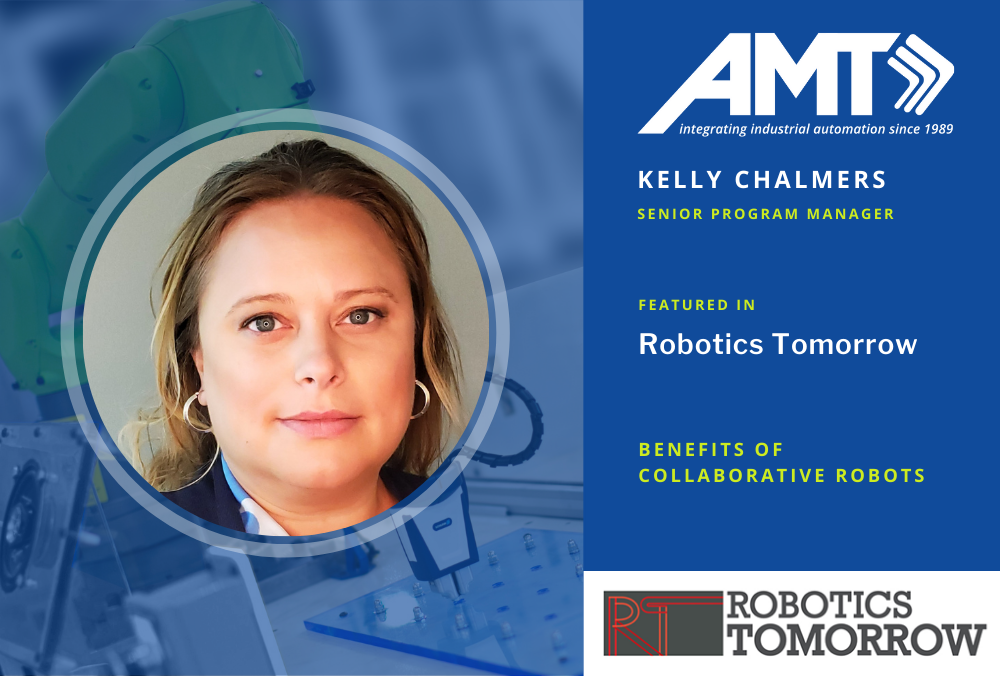Robotics Tomorrow: Kelly Chalmers in Collaborative Robot Discussion

AMT’s Senior Program Manager, Kelly Chalmers, was featured in a Robotics Tomorrow article entitled, “Benefits of Collaborative Robots.” Chalmers was asked about the benefits, misconceptions, safety standards, and developments of collaborative robots.
"I would say the most common misconceptions have to do with how collaborative robots affect safety considerations for a work space," said Chalmers. "There are some customers that may see these types of robots as a means to quickly eliminate safety challenges that they are seeing with implementing traditional automation. It is true that a collaborative robot is designed to work without additional physical guarding like fencing. But the robot is rarely a lone component in a system. For example some end of arm tools may not be appropriate with working in close proximity to a human regardless of being mounted to a collaborative robot. So collaborative robots can have some benefit in this aspect but may not alleviate all such concerns. All parts of a system need to be evaluated as part of a risk assessment process."
Chalmers also highlights AMT’s relationship with customers, addressing the obstacles some may have integrating robotic solutions and discusses the wide range of possibilities collaborative robotics offers. "Most of the development that I think will have widespread impact has to do with application of the technology. When collaborative robots were first released, people were excited but still unsure of how to really implement them. As use cases become available they quickly become adopted around an industry. One example of this is tire handling, which often happens in a highly manual workspace but is very cumbersome for actual manual activity. Large collaborative robots are now common place in automotive plants for this process. Another area of development is collaborative robot tooling. Several companies are working to provide this type of design solution to companies that want to implement collaborative robots so that they can realize the most benefit from the 'fenceless' capability. Finding solutions like these can have exponential impact. Once a company or industry has some understanding of how to implement the technology then they will use that same methodology to replicate the value over and over again."
Read the full article to learn more by visiting Robotics Tomorrow.
If you’re interested in becoming a part of the automation community by implementing robotic solutions into your business, contact one of our engineering specialists.

